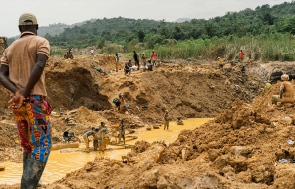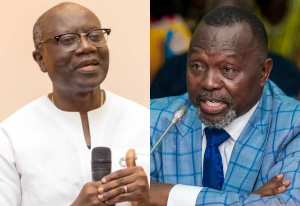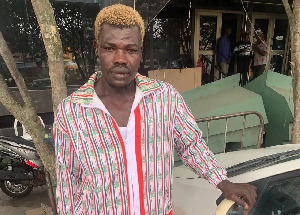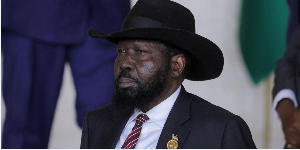Ghana is Africa’s largest gold producer and the world’s number six, with approximately 129 metric tonnes of gold produced in 2021. Gold mining can be defined as the beneficiation through ore enrichment and the processing of solid materials using open quarrying techniques. Gold mining stretches back over 1000 years, but it first served as a cultural heritage for decorating kings and queens from the Ashanti region. Gold also played an important role during the colonial era and served as a point of contact between the colonial governments and the people of Ghana. In the early half of the 1890s, it became an official export commodity, and today, it continues to contribute to socioeconomic development. Currently, gold contributes to 12% of Ghana’s Gross Domestic Product. Over the years, a new form of mining known as Artisanal and Small-scale Mining (ASM) has emerged in Ghana as a source of revenue and income for the rural poor. However, artisanal mining is dangerous to residents. Its operations continue to wreak havoc not only on the environment but also on farming and freshwater fishing. The history of artisanal mining can be traced back to the late 1980s until the PNDC government regularised its operation in 1989 by enacting the PNDCL 218 to allow citizens of 18 years and above to obtain licenses to participate in mining. Prior to the regularisation, artisanal mining was a preserve for the rural poor involving only small-sized families whose mining activities had no impact on the environment. In Ghana, artisanal mining exists in two forms: licensed and unlicensed ASM operations. Licensed artisanal mining is also known as small-scale mining, whereas in local parlance, unlicensed mining is ‘galamsey’, to wit, gather-to-sell. Galamsey is an illegal mining operation, which is otherwise known as artisanal small-scale gold mining. Nonetheless, ASM is interchangeably used by some to describe illegal mining. In my thesis, however, I prefix it with the term ‘illegal’ to differentiate it from other forms of mining that are legally regulated. Searching for an appropriate definition for ASM has been a knotty exercise. Nevertheless, some scholars define it according to the tools involved or based on the scale of impact it impacts on the environment. Whichever way one defines it, its operations involve deploying rudimentary tools such as hoes, shovels and pickaxes to dig the gold from underground. In Ghana, ASM operation covers areas measuring up to 25 acres. Globally, artisanal mining employs approximately 100 million people compared to only seven million working in the large-scale mining sector. ASM operation also takes place in 80 mineral-rich countries, but the practice is quite common in poor developing countries. In Africa, an estimated 20 million people are engaged in ASM. Ghana alone has approximately 1 million people working in artisanal mining, with an additional 5 million whose livelihoods depend directly on its proceeds. ASM also contributes to 40% of gold produced in Ghana, making it an attractive sector for revenue generation. The contribution of ASM to wealth creation is no longer in doubt, as recent reports show that artisanal miners made good income during the COVID-19 pandemic. Several reasons account for the large public interest in ASM operations in Africa and Ghana. First, it generates an average daily income of $3 (GH₵40) which is above the daily minimum wage of GH₵15 compared to farming with just a daily earning of $0.6 (GH₵7). Secondly, the increasing demand for gold has led to a global price increase, with most people hoping to cash in to make some good income. Thirdly, ASM operation generates income all year round compared to farming which takes place in an average of three rainy seasons a year. Notwithstanding the socio-economic contribution of ASM to development, however, very little attention is given to its impact on the environment. With its attendance environmental impacts, communities living in ASM areas remain the poorest, with no access to education and good roads. Artisanal and small-scale mining remains the major driver of environmental, safety, and health problems in most mining communities in Ghana. Between 2015 and 2018 alone, artisanal mining contributes to more than 40,000 hectares of deforestation. An additional 19,000 hectares of cocoa farms have been destroyed by ASM operations between 2021 and the first half of 2022. Reports have emerged of some cocoa farms being forcefully taken over by illegal ASM operators in some mining areas. Some farmers have also opted to sell off their farms to artisanal miners citing low-yield production due to illegal mining, low prices for cocoa beans, and difficult economic conditions. Illegal ASM operations also affect the distribution of potable water in Ghana. It is responsible for 60% pollution of major rivers. Recent reports show that Ghana might import water by 2030 if government fail to address the galamsey menace. The Ghana Water Company Limited and the Water Resource Commission have warned of possible water rationing due to illegal mining operations. Illegal mining also affects people’s health. It is responsible for more than 40% of mental health cases in some mining areas. Most illegal miners use dangerous chemicals such as mercury to separate the gold from its ores. Mercury contaminates river bodies and can cause mental and neurological disorders. The outbreak of the deadly Marburg virus and the increasing cases of malaria in some mining areas have been attributed to open galamsey pits, which host disease-causing organisms such as rats, rodents, and mosquitoes. To make matters worse, the irregular entry into Ghana by Chinese nationals has further exacerbated the crisis. Undocumented Chinese immigrants also participate in illegal mining. They also import heavy machines such as excavators into the country. The use of excavators by illegal miners has intensified its environmental impact in most areas. A major problem with illegal mining is government’s failure to enforce mining laws. The current laws—ACT 703 has been amended twice to include punishments for foreigners who engage in illegal mining. The law also put the Environmental Protection Agency and the minerals Commission at the heart of the enforcement of mining laws. However, approximately 85% of ASM operators have no license to operate due to long hours of processing mining license applications, and the exorbitant fees charged by the minerals and mining Commission. The difficulty with enforcing mining laws prompts the essence of my research. I have been looking into the problem to understand why past and present governments could not enforce the mining laws and to consider solutions to the problem. First, my study set out to examine the minerals and mining laws of Ghana. I obtained the laws and classified them from the International Comparative Legal Guides portal according to the years they were passed by parliament, and the state agencies responsible for their enforcement. I found that since 1992, parliament enacted approximately 30 regulations to guide mining operations in Ghana. However, the environmental laws are also the same as the mining laws, with sectoral responsibility for a number of enforcement agencies. Based on my examination and analysis of the law, I found that the mining laws are broad and comprehensive, with overlapping responsibilities for state institutions. I also found that the enforcement institutions could not enforce the law partly due to their overlapping roles. Most importantly, I found that the minerals and mining Commission, the Environmental Protection Agency, and the Ministry of Lands and Natural Resources could not enforce mining laws due to corruption, regulatory capture, and clientelism. My findings suggest that political influences and informal connections are obstacles to enforcing mining laws in Ghana. There are reports of politicians directly involved in illegal mining or private persons having links with people in government. Recent studies have shown that ASM operators do not own 60% of the gold they mine, which raises concern over the potential involvement of politically exposed persons in illegal mining. My thesis also examines the structure of government policies for the artisanal and small-scale mining sector. The aim is to understand the different policy choices and the decision-making structure of governments. I found that there is no policy ownership contrary to the objectives of the sustainable development goals 10. SDG 10 emphasises the need for systematic reduction in inequality by encouraging governments to ensure that no one is left behind in decision-making. However, my findings show that politicians heavily control the decision-making processes in Ghana. There is a community sense of entitlement to mineral deposits, and as such, their disproportionate exclusion from decision-making has led to disquiet among them over the management and use of their gold resources. The top-down approach to ASM decision-making has not only led to a lack of cooperation among local residents in addressing the challenges of illegal mining but also contributes to the creation of proxy mining regimes in these communities. The jungle-Justice approach Government took a jackboot approach to address artisanal and small-scale mining after Citi FM launched their campaign against galamsey in 2017. Several military personnel were deployed into illegal mining areas under operation vanguard and operation halt initiatives to evict operators forcefully. As a result, excavators belonging to some operators were seized, and others were destroyed and burnt. The jackboot approach, however, did not elicit a positive outcome. It rather triggered unrest leading to confrontations between the officers and some local residents. My findings suggest that operation vanguard, in particular, created a trade-off by providing an opportunity for some ASM operators to relocate to other mining areas to continue with illegal mining. Operation vanguard also lasted for two years instead of the initial proposed six-month ban on ASM operation. I found that this led to the loss of jobs and a decline in income levels for the already impoverished families who depend on ASM for their livelihood. The enforcement conundrum My thesis also examines the enforcement function of state institutions. I found that the EPA has broad mandates in ACT 490 to enforce the laws. Under this law, the EPA must undertake an Environmental Impact Assessment (EIA) of mining concessions awarded to operators. The EIA requirement is also in line with the 1992 AGENDA 21 action plan of the Rio de Janeiro agreement on the environment to which Ghana is a signatory. The purpose of the EIA is to enable EPA to provide useful advice to the government on the potential risk associated with certain mining practices and how to reduce them. In addition, the EPA has broad mandates under ACT 490 to summon or bring legal action against offenders of mining regulation. However, a number of factors have impeded the EPA’s ability to enforce mining laws effectively. First, a lack of coordination among state institutions has affected EPA’s ability to provide adequate and timely advice to the government on environmental matters. Secondly, their weak administrative capacity also affects their enforcement mandate. For example, the EPA lacks a functioning internal inspectorate division to help them ‘track and trace’ illegal mining operations. Nonetheless, my findings suggest that the EPA’s administrative capacity can be enhanced in several ways: (1 Involve them in the award of mining concessions to ensure they are placed at the heart of the system for enforcement of mining regulations. (2) Develop a robust reporting system to allow citizens to file complaints directly to the EPA regarding individuals and companies engaged in illegal mining. (3) Empower them to compel mining companies and individuals to provide periodic feedback on their mining activities. The EPA must have a quasi-judicial unit with the power to surcharge offenders and determine those that are liable for prosecution. EPA’s quasi-judicial powers would reduce the long waiting period it takes to prosecute environmental-related offences in the courts. Implementation deficit The findings also suggest that government’s failure to enforce mining laws is partly due to implementation challenges with Multilateral Environmental Agreements. I explore the puzzle by determining the extent to which this has affected the enforcement of mining laws. I obtained the agreements from the International Environmental Agreements (IEA) Database project portal. I found that since 1992, approximately 55 multilateral agreements have been ratified. They include the 2015 Paris climate change agreements, the 2022 Glasgow agreements to the Paris climate change agreements, the 1999 Minamata Convention, and the Revised Maputo Convention on the environment. These agreements seek to provide a framework for domestic legislation on environmental matters. In addition, they seek to crystalise Ghana’s response to global environmental issues by developing a strong partnership under the Common But Differentiated Responsibility (CBDR). The CBDR principle encourages all countries to partner to address global environmental challenges and to promote friendly environmental initiatives. However, the agreements have encountered several implementation challenges. Firstly, the non-binding clauses in some have made commitments to their implementation problematic. Secondly, the supremacy of domestic laws over international agreements poses implementation challenges. In some jurisdictions, such as Ghana, domestic laws must first be passed to give effect to foreign agreements. In Ghana, the process can take up to six months, and in most cases, it could delay due to disagreement among lawmakers. Nonetheless, I found that government prefers to adopt policies to give effect to international agreements rather than enact new laws. The distribution of mercury-free mining equipment to some licensed ASM operators by Nana Akufo-Addo’s government is one such example of using policies to implement international agreements at the local level. The mercury-free or the ‘Gold Katcha’ machine has the potential to trap mercury and eliminate its use in mining. The policy is also in line with the 1999 Minamata Convention, which Ghana ratified in 2017. Lessons learnt Governments put forward several initiatives to address illegal mining in Ghana. For example, the introduction of the six-community mining initiative by Nana Addo’s government seeks to encourage community participation in mining. The policy aims to provide alternative livelihood skills and financial assistance to those who volunteer to stop illegal mining. In addition, the community mining schemes seek to promote local participation in managing gold resources at the local levels and generate income for residents in mining areas. Much of the problem with illegal mining has to do with how mining licenses are issued. The current practice where the minister grants concessions are considered discriminatory. The objective of the community mining scheme is to reduce the unfairness in the award of mining licenses and to encourage local-level participation in mining administration. The recent small-scale mining consultative forums organised by the Ministry of lands and natural resources also have the potential to promote citizen participation in ASM decision-making. To sustain these initiatives, government must demonstrate commitment to ensure that the approach is not used to justify nominal obligations or the sheer requirement for citizen participation. The substance of citizen participation is to include people in decisions that affect their lives. It is part of their democratic rights. It is their right to have access to and be included in decisions that directly affect them. For example, by encouraging access to environmental information, they become aware of the potential dangers associated with mining activities. It would help provide accurate and timely information about activities that could have lasting effects on their lives. I also found that artisanal mining involves many actors and that decision-making can produce winners and losers. In that regard, stakeholders must ensure that ‘trades’ can be made to bring satisfaction to all parties. Government can also promote participation in ASM decision-making through private initiatives such as the Ghana Extractive Industries Transparency Initiative. The GHEITI platforms seek to promote accountability and openness in managing mineral resources. Civil society groups and other non-state actors have large platforms that can generate a number of ideas for government to consider in addressing illegal mining. Prince Komla Bansah Researcher (PhD-Environmental Politics, governance, & participation) School of social and political science The Bridge House, University of Lincoln, Brayford Pool, Lincoln, England
Opinions of Monday, 17 October 2022
Columnist: Prince Bansah
Involving citizens can help fix illegal mining in Ghana, here’s how
Opinions














